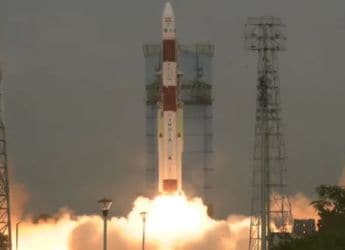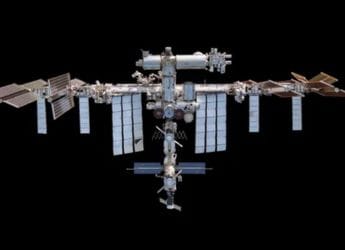- Home
- Science
- Science News
- Dead Star Caught Ripping Apart Planetary System in a Rare Incidence of Cosmic Cannibilism
Dead Star Caught Ripping Apart Planetary System in a Rare Incidence of Cosmic Cannibilism
Researchers have examined the material captured by the atmosphere of a white dwarf star called G238-44.

Photo Credit: NASA/ Hubble
The observation helped shed light on the violent nature of the evolved planetary system
In a rare cosmic observation, a sun-like star destroyed its planetary system while dying, leaving behind a white dwarf star. The dead star is now consuming both icy and rocky-metallic material which forms the planets. The discovery was made by analysing archival data from NASA's Hubble Telescope and other observatories of the American space agency. Termed cosmic cannibalism, the observation helped shed light on the violent nature of the evolved planetary system and can help astronomers in understanding the makeup of newly forming systems.
Researchers have examined the material captured by the atmosphere of a white dwarf star called G238-44. It was the remnant of a Sun-like star that got destroyed, stopped burning fuel through nuclear fusion and shed off its outer layers.
“We have never seen both of these kinds of objects accreting onto a white dwarf at the same time," said Ted Johnson, lead researcher and the University of California, Los Angeles (UCLA) bachelor's graduate. Johnson added that studying the white dwarf can lead to a better understanding of the existing planetary systems.
According to Benjamin Zuckerman, UCLA professor and co-author of the study, elements that are in abundance on the white dwarf seem to require both a volatile-rich and rocky parent body. “The first example we've found among studies of hundreds of white dwarfs,” he added.
During the death of a planetary system, a star like ours usually expands into a bloated red giant and begins to shed mass, puffing off its outer layers. Johnson explained that after this phase, a white dwarf is left which is not bigger than Earth. “The wayward planets end up getting very close to the star and experience powerful tidal forces that tear them apart,” he added. This, in turn, forms a gaseous and dusty disk that lands on the white dwarf star's surface.
Now, the researchers are aiming to examine the white dwarf star and use the information to get a better grip on understanding planetary systems.
Catch the latest from the Consumer Electronics Show on Gadgets 360, at our CES 2026 hub.
- Samsung Galaxy Unpacked 2025
- ChatGPT
- Redmi Note 14 Pro+
- iPhone 16
- Apple Vision Pro
- Oneplus 12
- OnePlus Nord CE 3 Lite 5G
- iPhone 13
- Xiaomi 14 Pro
- Oppo Find N3
- Tecno Spark Go (2023)
- Realme V30
- Best Phones Under 25000
- Samsung Galaxy S24 Series
- Cryptocurrency
- iQoo 12
- Samsung Galaxy S24 Ultra
- Giottus
- Samsung Galaxy Z Flip 5
- Apple 'Scary Fast'
- Housefull 5
- GoPro Hero 12 Black Review
- Invincible Season 2
- JioGlass
- HD Ready TV
- Laptop Under 50000
- Smartwatch Under 10000
- Latest Mobile Phones
- Compare Phones
- Vivo Y500i
- OnePlus Turbo 6V
- OnePlus Turbo 6
- Itel Zeno 20 Max
- OPPO Reno 15 Pro Mini 5G
- Poco M8 Pro 5G
- Motorola Signature
- Vivo Y50e 5G
- Lenovo Yoga Slim 7x (2025)
- Lenovo Yoga Slim 7a
- Realme Pad 3
- OPPO Pad Air 5
- Xiaomi Watch 5
- Huawei Watch 10th Anniversary Edition
- Acerpure Nitro Z Series 100-inch QLED TV
- Samsung 43 Inch LED Ultra HD (4K) Smart TV (UA43UE81AFULXL)
- Asus ROG Ally
- Nintendo Switch Lite
- Haier 1.6 Ton 5 Star Inverter Split AC (HSU19G-MZAID5BN-INV)
- Haier 1.6 Ton 5 Star Inverter Split AC (HSU19G-MZAIM5BN-INV)












